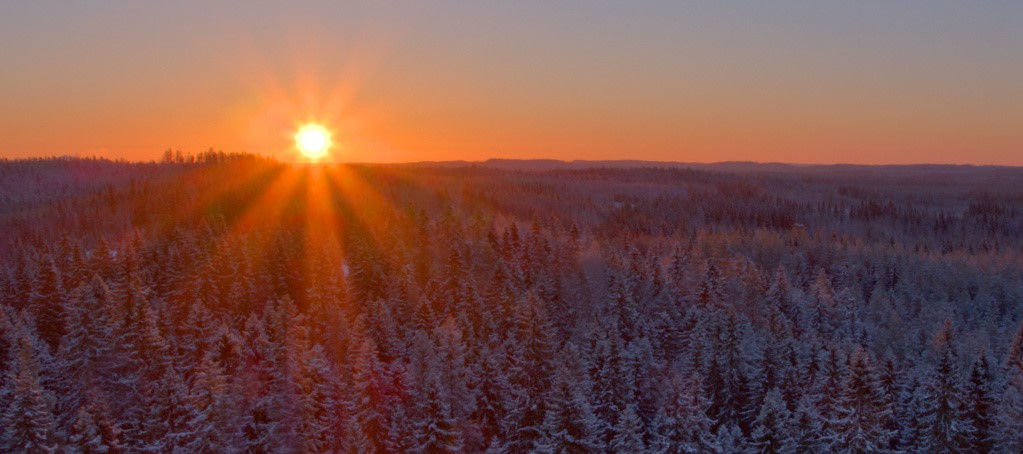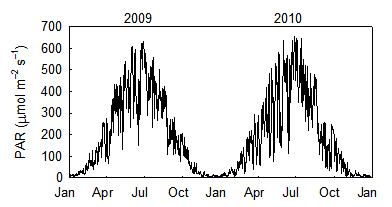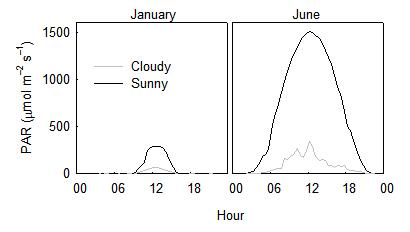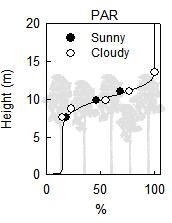
Sunlight makes photosynthesis possible. From all the available light that comes from the sun, green plants are able to use most efficiently the visible light (wavelength range 400 to 700 nm). This wavelength range is called photosynthetically active radiation (PAR) and is the common measure for light intensity in plant sciences. The unit for PAR is usually µmol m–2 s–1. The effect of light on photosynthesis has a clear saturating pattern. At low light intensity more light results in more photosynthesis.
The circulation of the globe and the tilting of the rotation axle generates a strong annual cycle of incoming solar radiation at the boreal zone in the North. The incoming radiation reaches its annual maximum in midsummer. In late December, radiation is at a minimum. The days are short and the overall level of radiation is low in winter.
The rotation of Earth creates the diurnal changes in radiation. During totally cloudless and cloudy days, the daily pattern of photosynthetic active radiation is very regular but clouds usually travel across the sky creating a strong variation in radiation. Sometimes, the reflection from clouds focus the radiation and thus irradiance can even be larger than during clear sky conditions.
The absorption of solar radiation by leaves, stems and other plant parts generate strong spatial variation in the light within the tree canopy. In general, light intensity decreases the deeper it needs to penetrate the canopy. A single point is in full shade (umbra) without direct PAR if the sun is totally covered by canopy elements. The area is in penumbra if the sun is partially covered. Full sunlight is called a sunfleck. The probability of decrease in sunflecks and increase in umbras rises at lowering levels within a tree canopy.
Photosynthetically active radiation (PAR) is measured with a photodiode that is sensitive to the radiation at the wavelength range of 400–700nm, which corresponds to the wavelengths most important to photosynthesis. Semiconductors such as photodiodes suffer from moisture and high temperature. The researcher must pay special attention on the straight position: the sensor must be held straight up because a tilted position creates error in the measurement. Here you can view the PAR measurements made at Hyytiälä Forestry Field Station.


